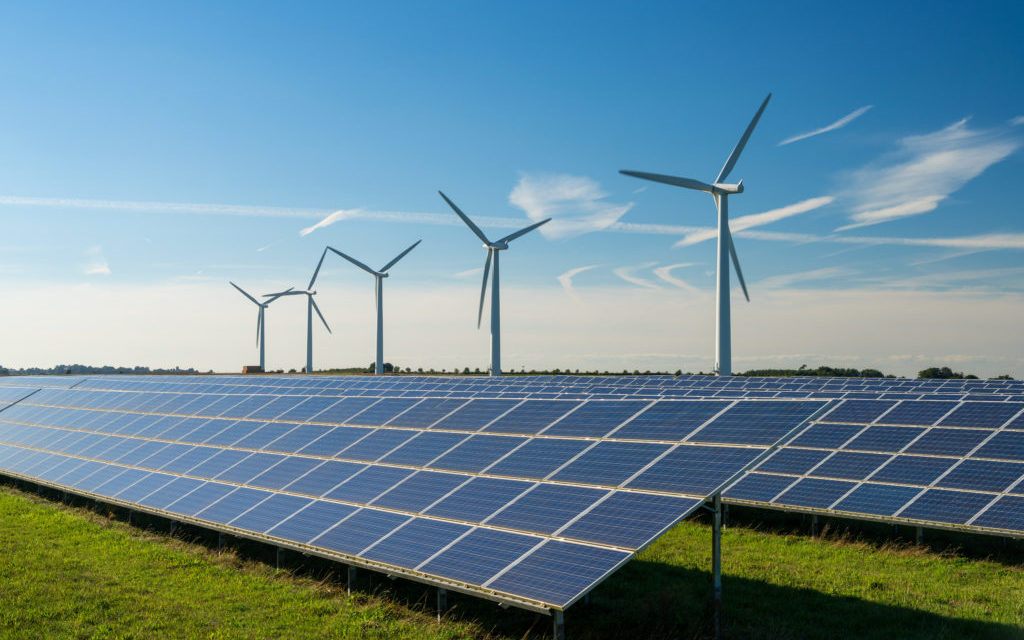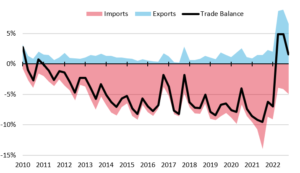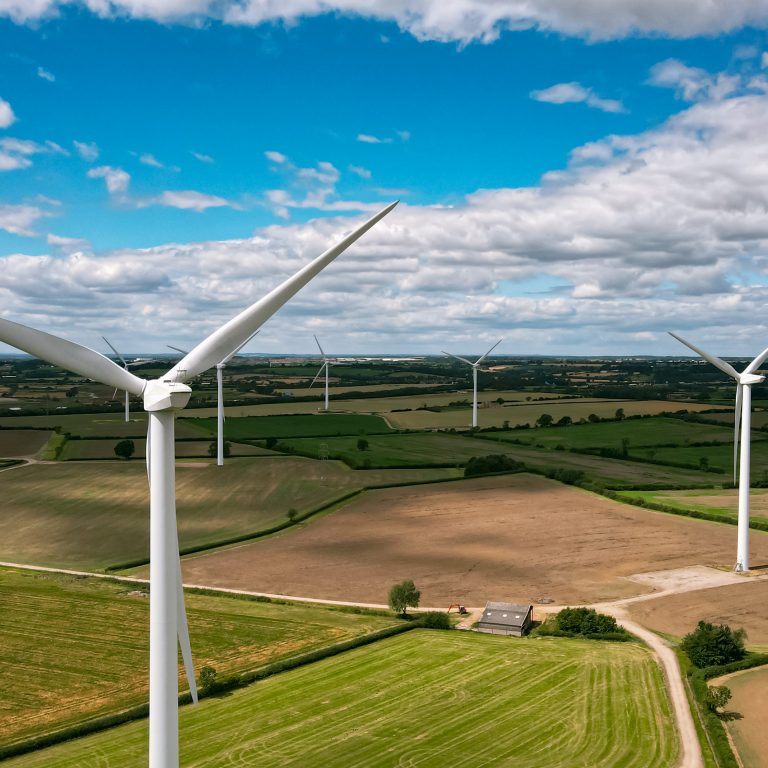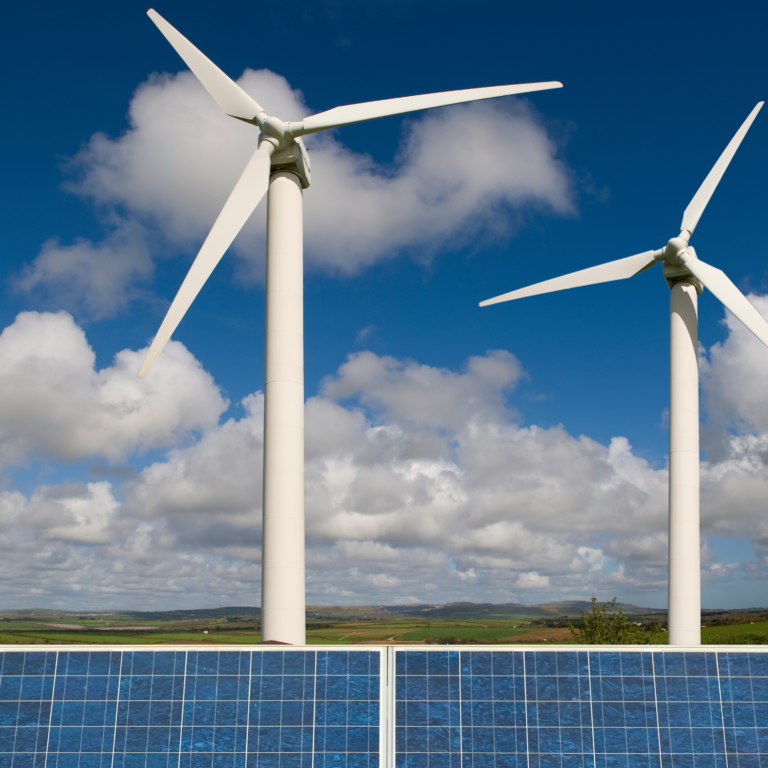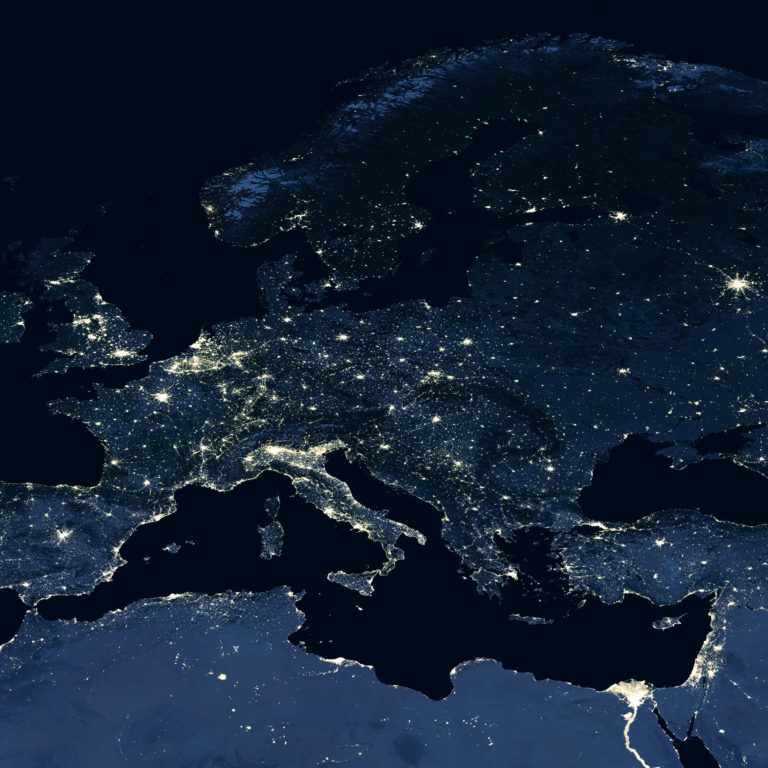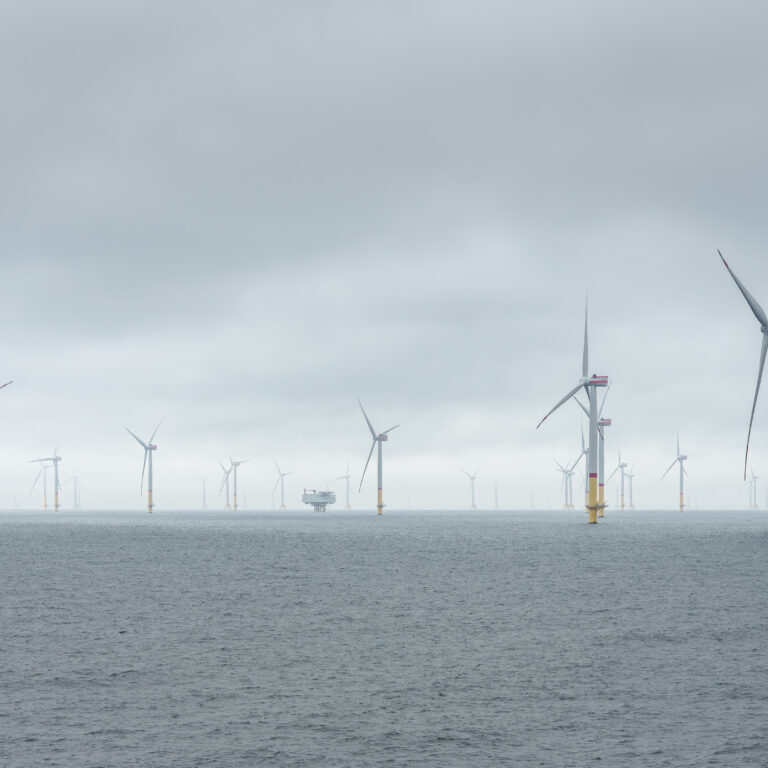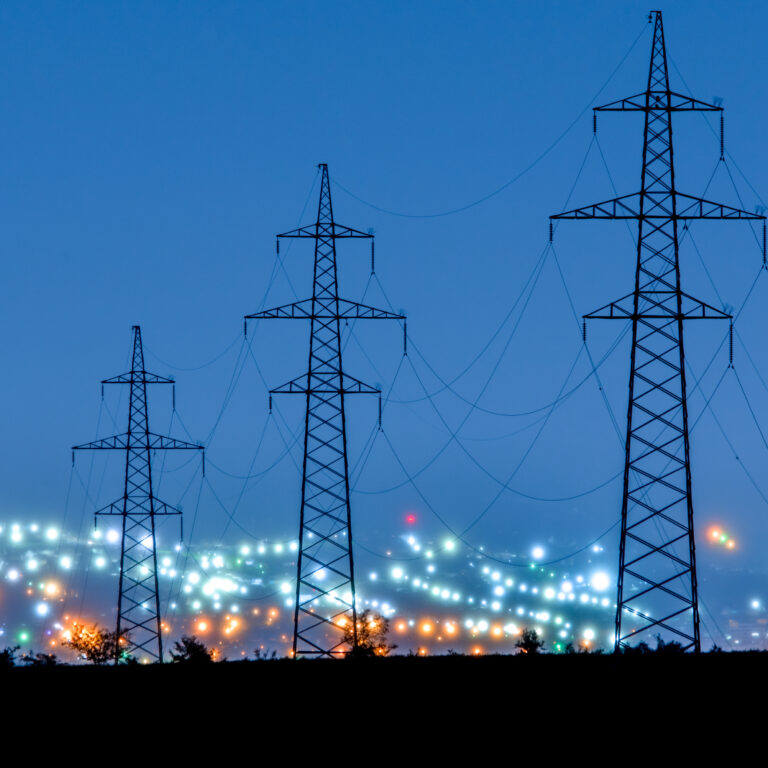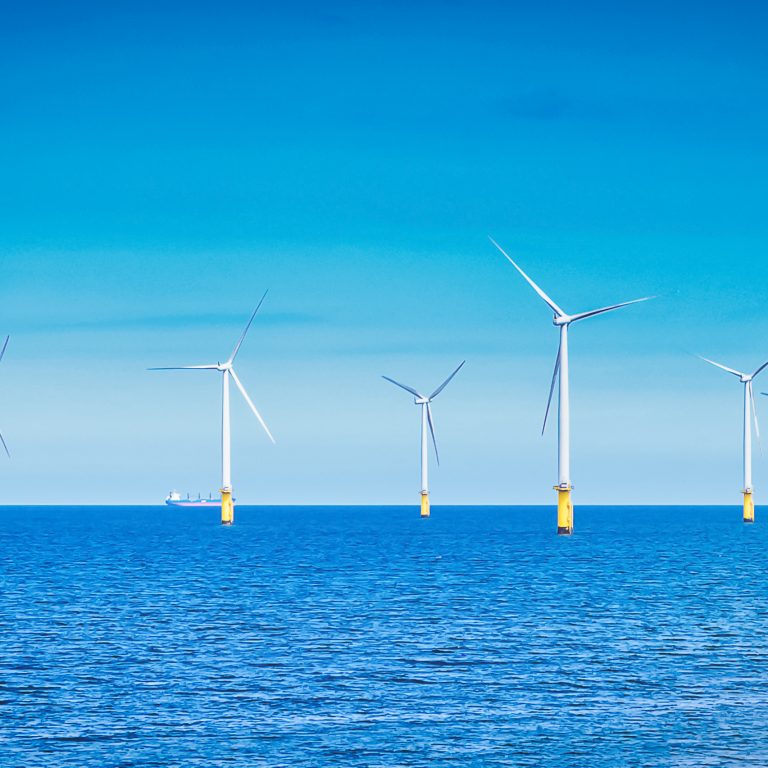- New analysis shows Britain’s power grid had a record-breaking green year, but the spiralling cost of fossil fuels led power prices to almost double.
- Renewable power generated more than two-fifths (40%) of the country’s electricity for the first time – helping to cut carbon emissions by 2.7 million tonnes.
- Britain exported more power to Europe than ever before, making it a net exporter of electricity for the first time in over a decade.
Academics from Imperial College London for Drax Electric Insights, commissioned via Imperial Consultants, analysed the data which highlights the turbulence that Britain’s electricity system has endured amid an unprecedented year for the energy industry.
Renewable power sources – wind, solar, biomass and hydro – generated 40% of the country’s electricity in 2022 – up from 35% in 2021, helping to cut CO2 emissions from the power sector by 2.7 million tonnes compared to the previous year. Overall generation from renewables has more than quadrupled over the last decade.
At one stage during May, renewables provided 72.8% of power to the grid whilst wind farms generated a landmark 20GW of electricity for the first time – the maximum output from wind is now up by a third compared to four years ago.
Despite the record supply of cheap renewable electricity, the unprecedented rise in the cost of gas following Russia’s invasion of Ukraine sent power prices to a new all-time high. The fossil fuel supplied 42% of the country’s power this year, its largest share of the fuel mix since 2016. Britain is on course to have annual average wholesale price above £200 per MWh for the first time ever in 2022 – up from £113 the year before. This is nearly six times higher than the cost of electricity in 2020 (£34 per MWh).
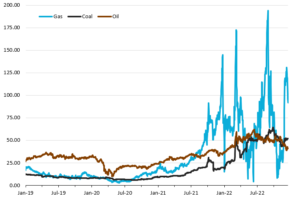
The price (£/MWh) of fossil fuels over the last three years, relative to their averages from 2010-19
Dr Iain Staffell of Imperial College London, and lead author of the quarterly Drax Electric Insights report series, said:
“This has been a year like no other for the energy industry. The public are feeling the pain of high gas prices on their energy bills even though renewables are providing the grid with more cheap, green electricity than ever before.
“The lesson from 2022 is that we need to break our addiction to fossil fuels once and for all if we want lower cost and more secure energy supplies. If we had not invested in wind, solar and biomass over the last decade our energy bills would have been even higher, as would the risk of blackouts over winter.
“The energy crisis cannot be solved by increasing our reliance on gas imported from abroad. We need to turbocharge our investment in clean energy technologies to become Europe’s renewable electricity powerhouse, which will cut fuel bills at home and bring money into the economy by exporting power to our neighbouring countries.”
For the first time in more than a decade, Britain is a net exporter of electricity to its European neighbours. Electricity exports quadrupled from last year to 17.2 TWh of electricity – generating around £3.1bn for the UK economy. The country exported a net total of 1.9TWh, representing a dramatic swing in power trading from the previous year when Britain instead imported a net total of 22.9TWh.
Will Gardiner, Drax Group CEO, said:
“Drax plays a critical role in supporting the UK energy system, generating more renewable power by output than any other company.
“We can accelerate and strengthen Britain’s long-term energy security by ending our reliance on expensive, imported fossil fuels and instead increase investment in homegrown renewables, and innovative green technologies such as bioenergy with carbon capture and storage (BECCS) and pumped storage hydro.”
Drax is the UK’s biggest renewable power producer by output, generating enough renewable electricity from biomass and hydro for around 5 million homes – producing as much as 20% of the country’s renewable electricity during times of peak demand in 2022.
Drax plans to invest billions of pounds expanding its pumped hydro storage capacity at its Cruachan power station in Scotland and deploying BECCS at its power station in North Yorkshire, to permanently remove 8million tonnes of carbon dioxide from the atmosphere each year by 2030, whilst generating the reliable, renewable power the country needs.
ENDS
Media contacts:
Aidan Kerr
Media Manager
E: aidan.kerr@drax.com
T: 07849090368
Ali Lewis
Head of Media & PR
E: Ali.Lewis@Drax.com
T: 07712 670 888
Editor’s Notes
- 2022 figures are from 1 January to 17 December, with projections used to account for the rest of the year.
- The estimation of the value of electricity exports for the UK economy (2022: £3.1bn) is based on the total volume of gross exports if they were sold at day-ahead prices.
Some key records from the data:
- Renewable power generated 40% of Britain’s electricity needs (2021: 35%).
- New all-time high annual share of power generated from wind (2022: 28%, 2021: 23%).
- The power sector produced 50.1 million tonnes of CO2, a fall of 2.7 million tonnes from last year (2021: 52.8 million tonnes of CO2).
- Lowest ever amount of power generated from coal (2022: 4.3TWh, 2021: 5.0TWh).
- Output from gas generation rose to 113.8TWh (2021:107.2TWh).
- Overall power demand continued its steady decline over the last decade to 269.9TWh (2021: 276.5TWh).
- A dramatic 20.9TWh swing in power trading occurred on the Great Britain – France interconnectors with GB net exporting 7.2TWh compared to net imports of 13.7TWh in 2021.
About Electric Insights
- Electric Insights is commissioned by Drax and delivered by a team of independent academics from Imperial College London, facilitated by the college’s consultancy company – Imperial Consultants. The quarterly report analyses raw data made publicly available by National Grid and Elexon, which run the electricity and balancing market respectively, and Sheffield Solar.
- Electric Insights Quarterly focuses on supply and demand, prices, emissions, the performance of the various generation technologies and the network that connects them.
- The quarterly reports from the last four and a half years can be access at the new website electricinsights.co.ukalongside the interactive electricinsights.co.uk which provides data from 2009 until the present.
- You can embed Electric Insight’s live dashboard on your website or blog to keep track of what’s happening in the power grid through a new widget.
About Drax
Drax Group’s purpose is to enable a zero carbon, lower cost energy future and in 2019 announced a world-leading ambition to be carbon negative by 2030, using bioenergy with carbon capture and storage (BECCS) technology.
Drax’s around 3,000 employees operate across three principal areas of activity – electricity generation, electricity sales to business customers and compressed wood pellet production and supply to third parties. For more information visit www.drax.com
Power generation:
Drax owns and operates a portfolio of renewable electricity generation assets in England and Scotland. The assets include the UK’s largest power station, based at Selby, North Yorkshire, which supplies five percent of the country’s electricity needs.
Having converted Drax Power Station to use sustainable biomass instead of coal it has become the UK’s biggest renewable power generator and the largest decarbonisation project in Europe. It is also where Drax is piloting the groundbreaking negative emissions technology BECCS within its CCUS (Carbon Capture Utilisation and Storage) Incubation Area.
Its pumped storage, hydro and energy from waste assets in Scotland include Cruachan Power Station – a flexible pumped storage facility within the hollowed-out mountain Ben Cruachan.
The Group also aims to build on its BECCS innovation at Drax Power Station with a target to deliver 4 million tonnes of negative CO2 emissions each year from new-build BECCS outside of the UK by 2030 and is currently developing models for North American and European markets.
Pellet production and supply:
The Group has 19 operational pellet plants and developments with nameplate production capacity of around 5 million tonnes a year.
Drax is targeting 8 million tonnes of production capacity by 2030, which will require the development of over 3 million tonnes of new biomass pellet production capacity. The pellets are produced using materials sourced from sustainably managed working forests and are supplied to third party customers in Europe and Asia for the generation of renewable power.
Drax’s pellet plants supply biomass used at its own power station in North Yorkshire, England to generate flexible, renewable power for the UK’s homes and businesses, and also to customers in Europe and Asia.
Customers:
Drax supplies renewable electricity to UK businesses, offering a range of energy-related services including energy optimisation, as well as electric vehicle strategy and management.
To find out more go to the website www.energy.drax.com






